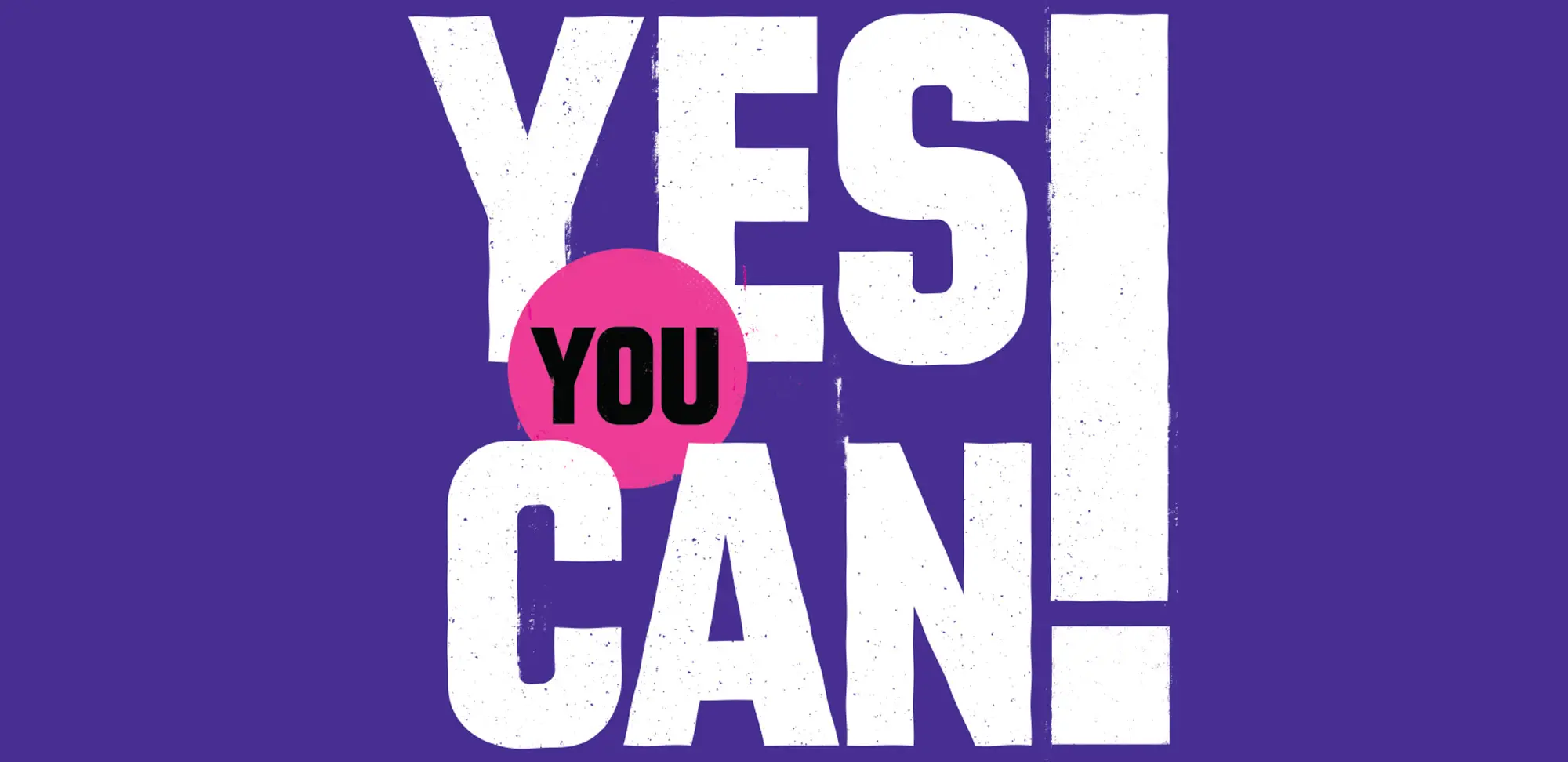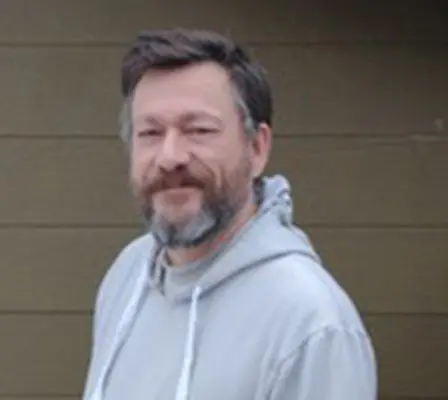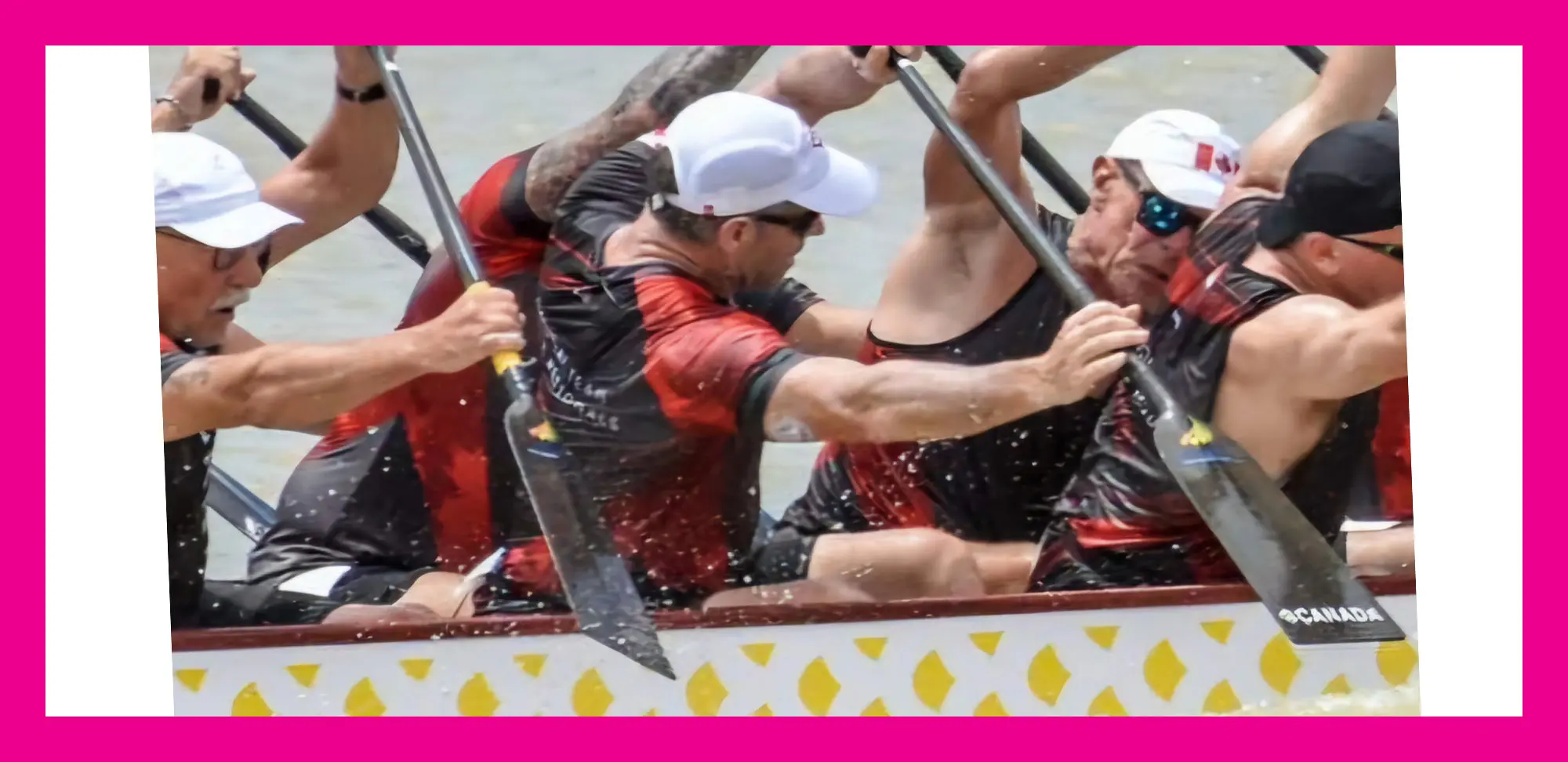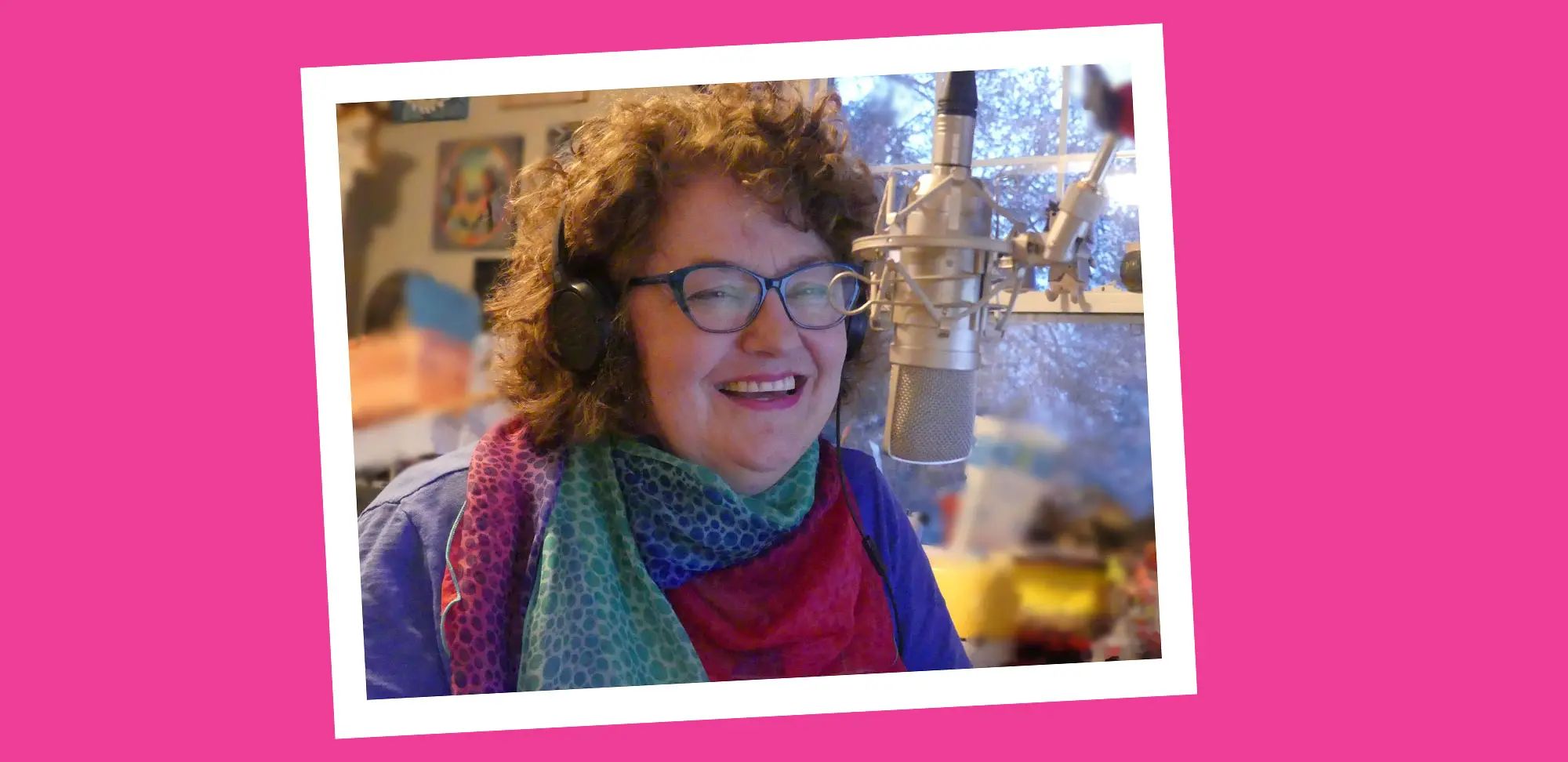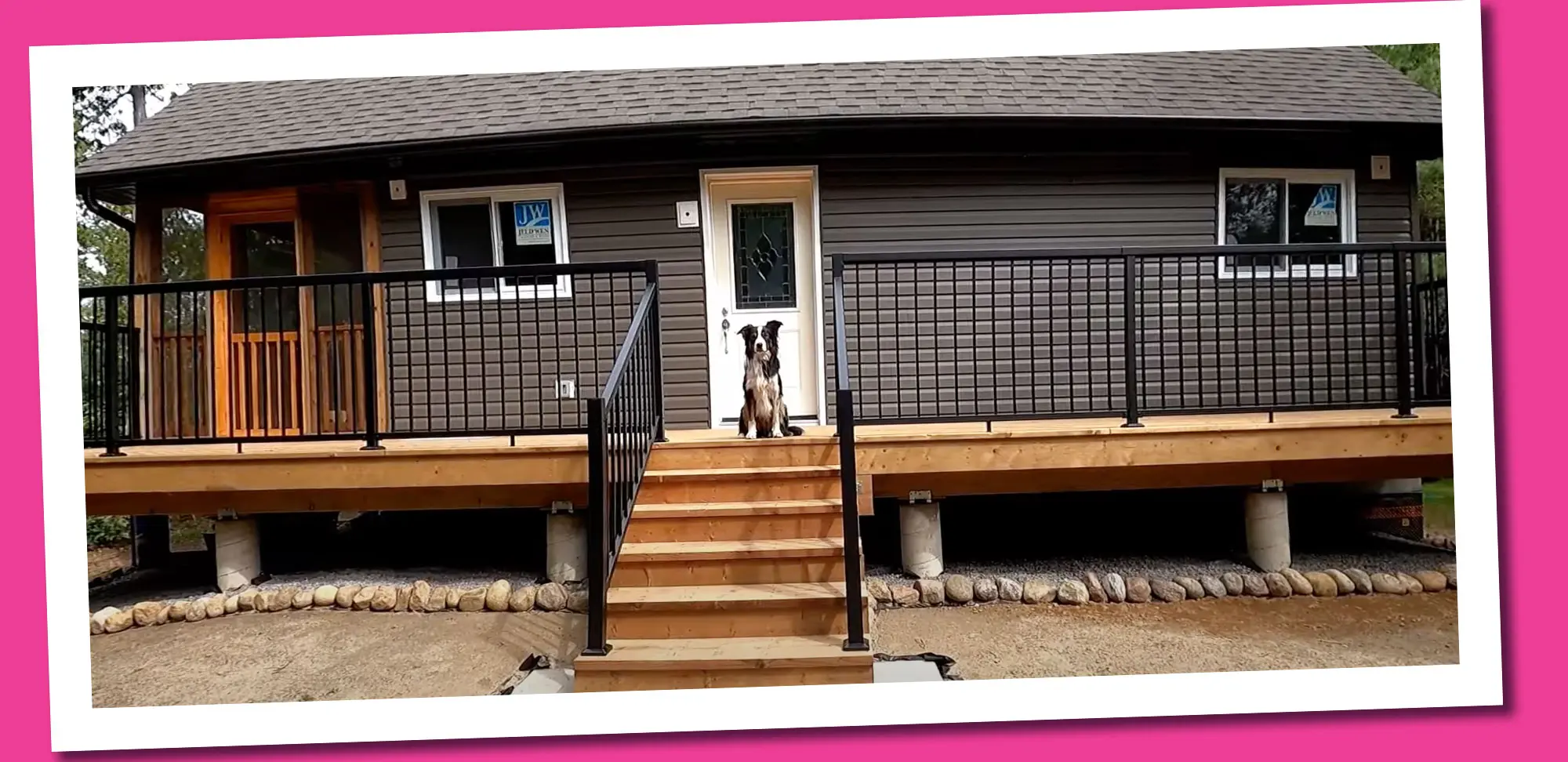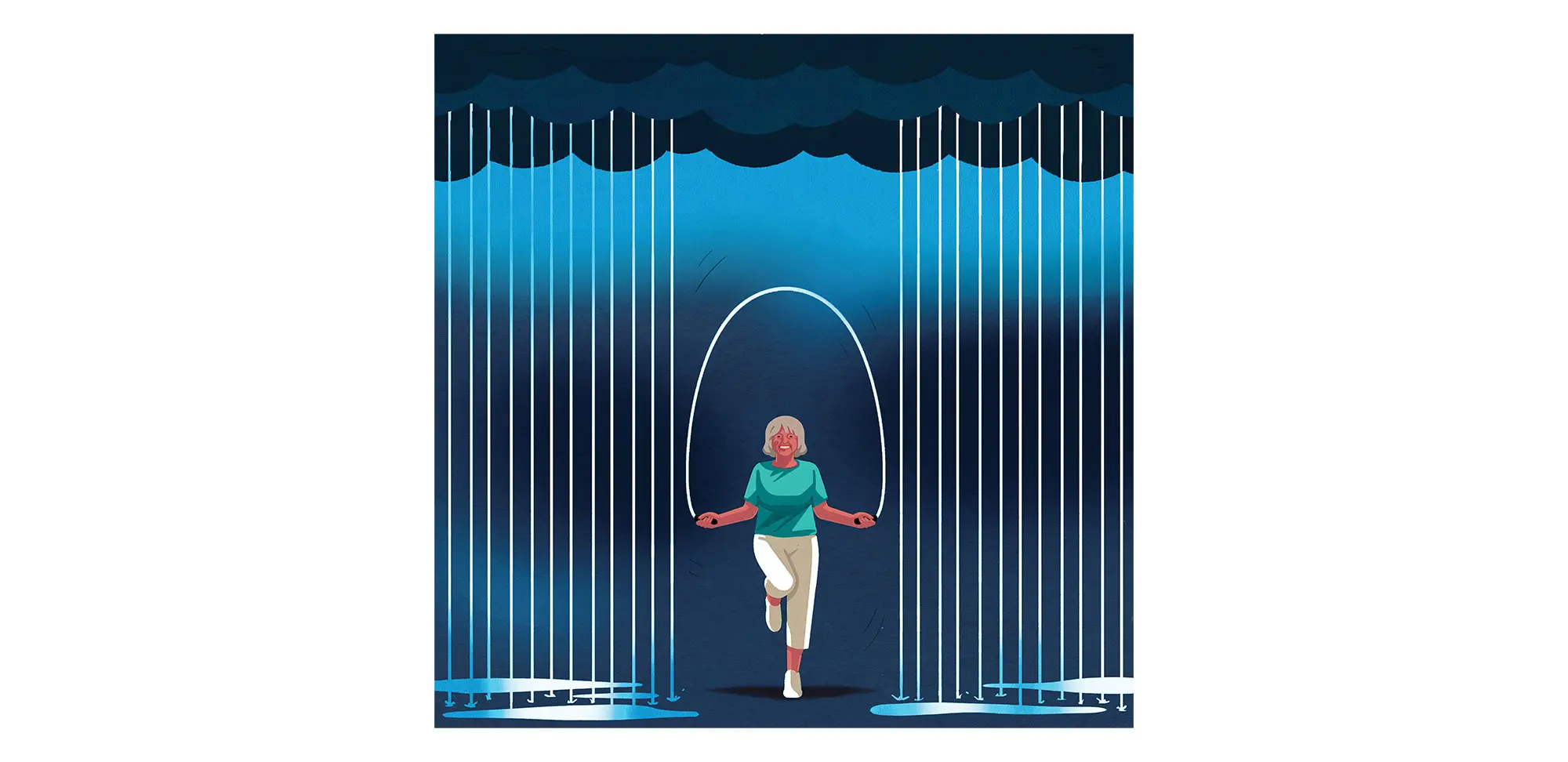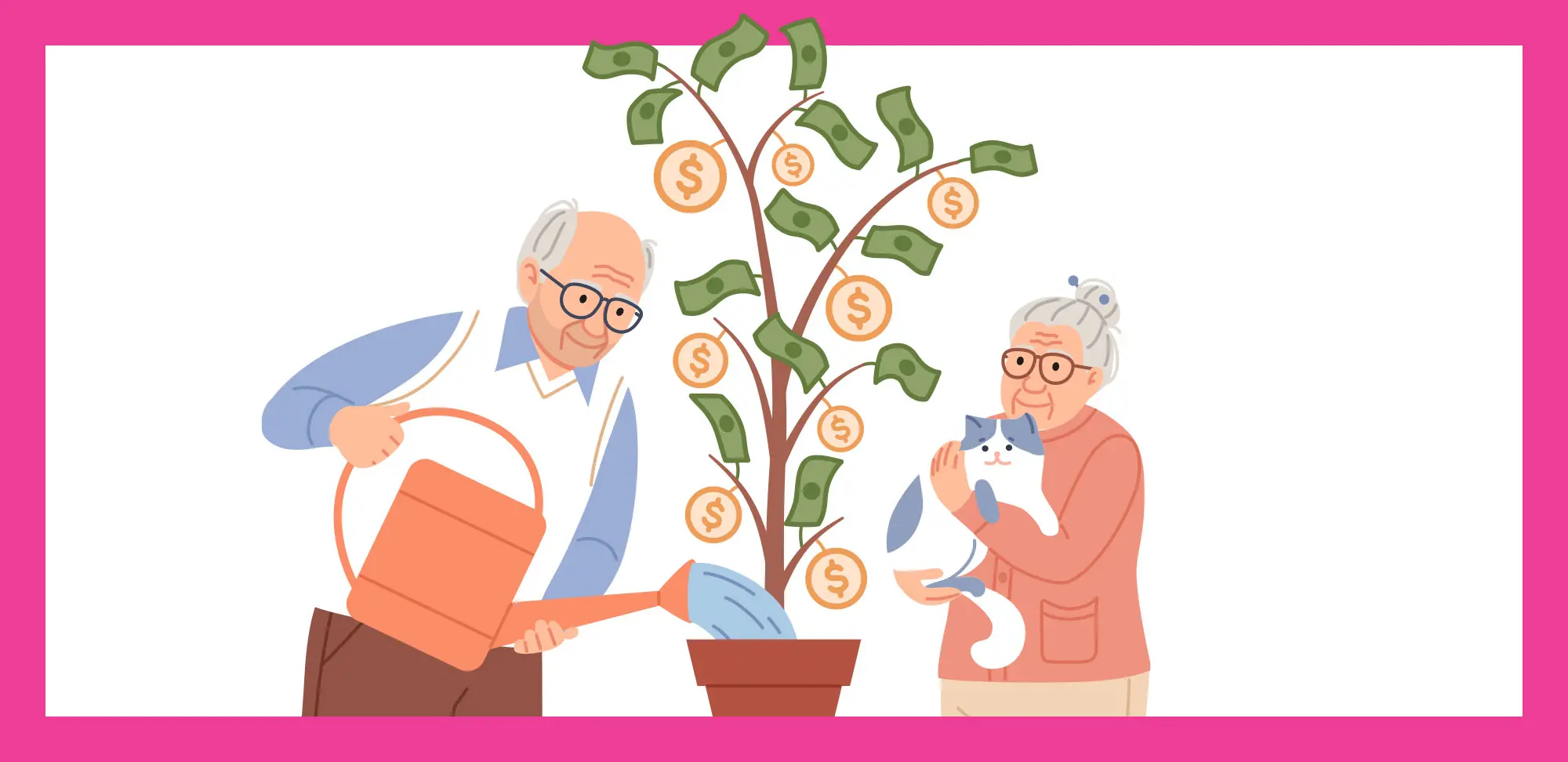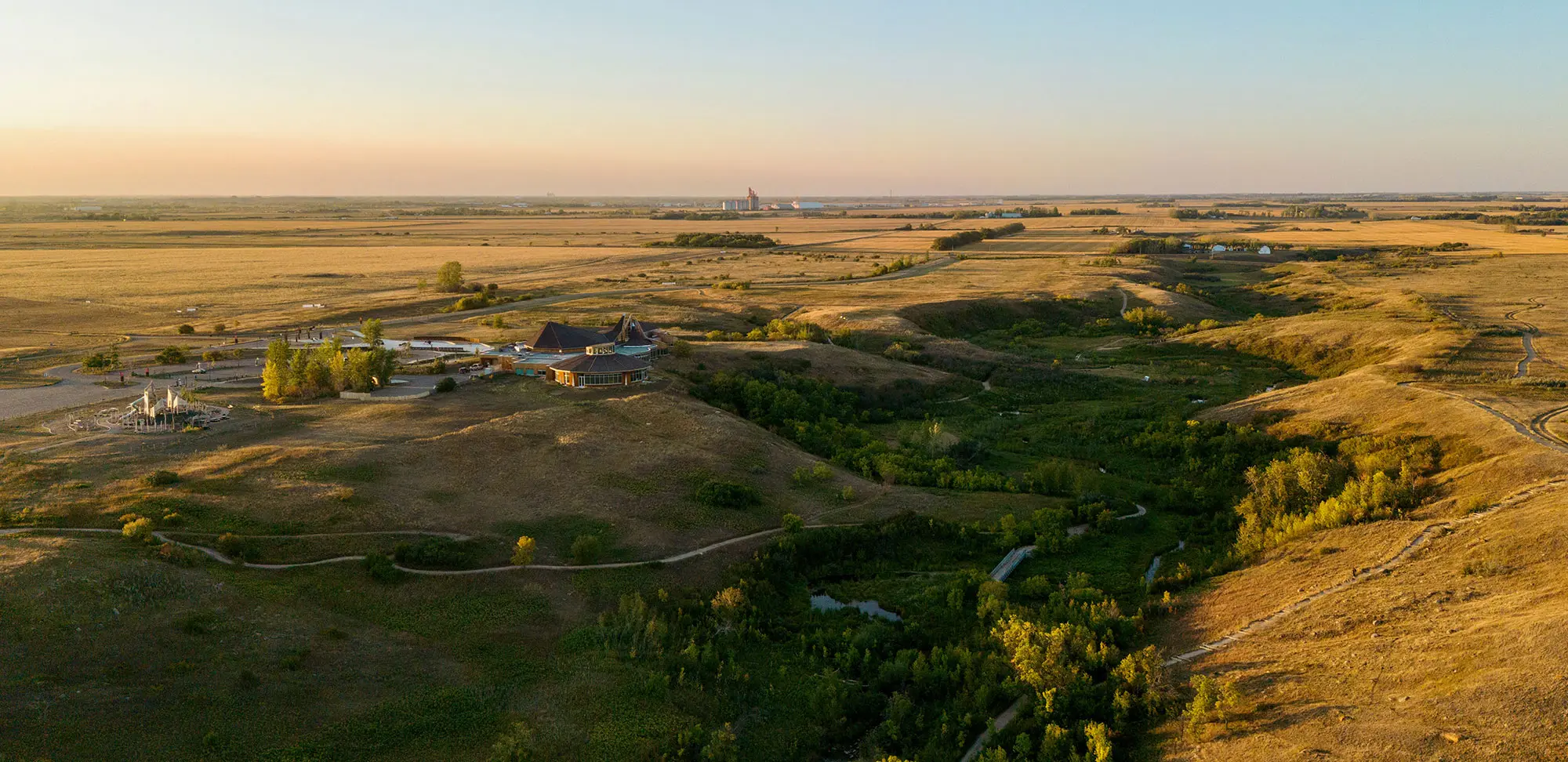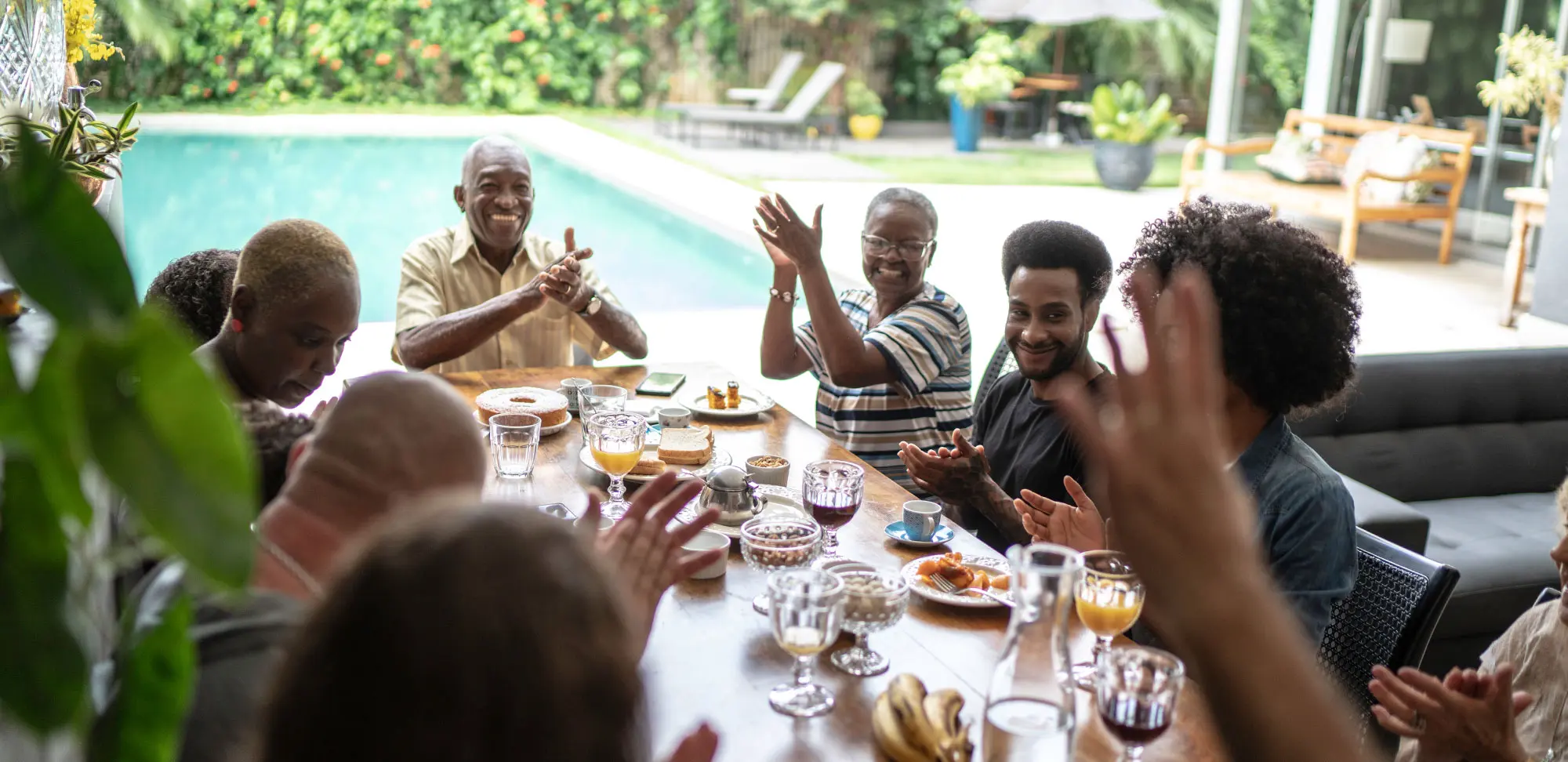In the winter issue, you met six RTOERO members who signed up for our Yes, You Can! Challenge. Each shared their goal and their plan to realize that goal. Did they? Was it a tough go? Were there setbacks? We checked in with Challengers four months later to find out what they learned about “success” and themselves.
1. Ian Robertson
District 14 Niagara
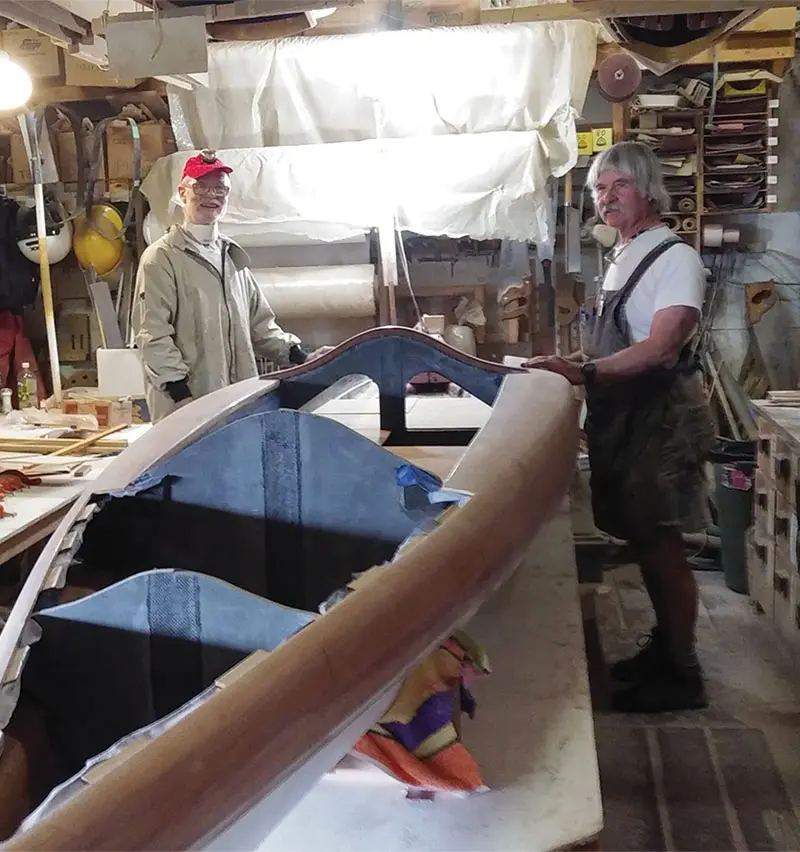
Challenge: To finish building a 16-foot sailboat/rowboat with builder Skip Izon and complete a solo 1,300-kilometre loop of the Great Lakes via the Trent-Severn Waterway to fundraise for his favourite environmental organization, World Wildlife Fund Canada
Status: Delayed
Impact of COVID-19 pandemic
“It’s been a long slog. The Greta T is not a boat built from a set of plans. It’s a completely new boat with many unique features. Skip Izon and I had measured drawings of the outline, and the whole shape that we could use to guide us where to put certain things, but all the fittings had to be made by us. I had to make the rudder, centre board and so on, and we weren’t always sure what would fit where.
“I had planned to do this in the winter, when I could stay up in Grand Bend at a much cheaper rate. I burned through my building budget pretty quick, and by the end of August last year, I decided to take the Greta T home and finish it off there. Years ago, I built a loft on the top of my garage, and I’ve been working on the boat up there.
“The delay has actually been a useful experience. It has allowed me more time to consider what I’m going to take with me when I start the trip, and where to get it from and how I’m going to camp and so on. It has forced me to be a bit more pragmatic about it all.
“And also, to calm myself and say, ‘Look, I didn’t create this pandemic. It’s just what’s happened now. That’s the way it is, and we’ll just plug on and hope people will understand.’”
“Some time ago my daughter said, ‘You need to have a business card with the website.’ So we got one made up and I left some with Skip Izon, and I gave out a few at a sailing regatta I was at. And when I got back, I had received donations from some of the Laser sailboat centres, so that was very encouraging.
“I’m not discouraged. There are a couple more stages to go and then I can get on my way. I’m planning the trip this May. The Trent-Severn opens on the May 24 weekend. I’m going to give myself about eight or 10 days to get up there and should hit it on the opening weekend, hopefully, or shortly after.
“I’m looking forward to the trip. I’ve met so many people and that has energized me. And I’ve had more significant conversations with donors. It’s been rewarding, even at this stage.”
2. Christine Inverarity
District 7 Windsor-Essex

Challenge: To exercise regularly and rebuild muscles that haven’t been used in a long time, thanks to six major surgeries
Status: Accomplished
“When COVID shut down my gym, where I’d been going forever, I signed up for The Balanced Life, like at 5:30 in the morning, and tried Pilates online, at my doctor’s advice.
“I injured myself four weeks into my training — I guess I did something wrong — and had to take six weeks off. It has been a long road getting back, and I’m at it again this past week after cortisone shots took their effect.
“I used that as an excuse to do nothing. I felt like a failure. But you know what? Setbacks happen.
“The Challenge gave me a little push, to be accountable, and it’s been awesome. I now can walk 5.2 kilometres. Like, that’s long for me.
“I’m back at The Balanced Life. It’s a great workout. It’s motivating. They’re a supportive community and that’s what I needed, even though it’s online. They will send texts every now and then, and I also signed up for a positive text message on my cellphone. And if I see one I really like, I print it and I stick it on my mirror for the next week. It may seem hokey, but it keeps me going.
“I’m getting older and I’m going to slow down, but I think aging can be used as an excuse. Just because I’m not teaching or a principal anymore doesn’t take any of ‘me’ away. I want to live the best I can. I have grandchildren and I want to keep up with them on our walks and in the pool. Just on the weekend, they came and we jumped in the hot tub and they go, ‘Wow, Nina, how’d you get in the hot tub faster than us?’ It’s surprising how fast your muscle memory is and how quickly you can improve in your ability and your energy.
“Leave your running shoes right by your bed. Put them on as soon as you get out of bed in the morning. You’re not going to put your legs back in the bed with your running shoes on, right? Right.
“Then put on your headphones and start walking out the door. You feel so much better when you’re done. You might be tired, you might be sweaty, stinky, whatever. But you’re feeling better mentally. And to me that motivation is everything.”
ˮFailure is a part of [the] process. You just learn to pick yourself up. And the quicker and more resilient you become, the better you are.ˮ – Michelle Obama
3. Jerzy “Smokey” Dymny
District 47 Vancouver Island
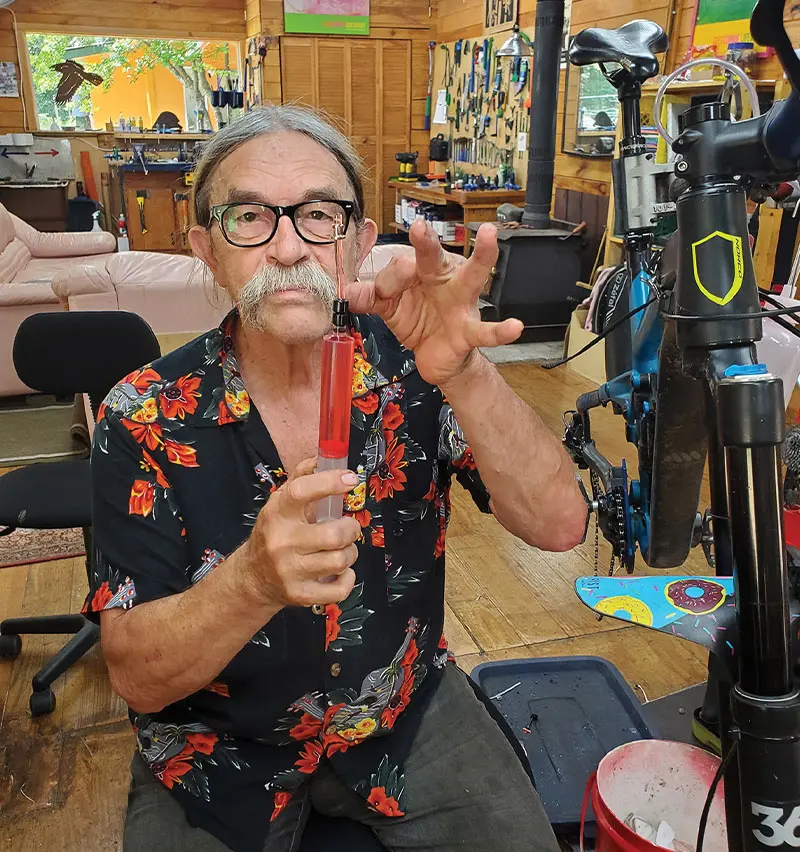
Challenge: To ride the hilly Quadra Island road loop on his bicycle twice (a total of 32.4 kilometres), non-stop, except for water refills
Status: Sidetracked
“This summer was so busy: courses, I lost staff, I had to do renovations — my training schedule was wrecked!
“Now, I’m playing catch-up.
“I’m training on the loop. I’m going about every third day, or anytime I can break away from work. I jump on the bike and whip around the loop. Luckily, we have the hills. If I buy one of those cycle computers — they come with an altimeter — I’ll know how many hills I’ve climbed and how many metres I’ve climbed. I can just keep increasing my riding till I know I’m doing about 1,000 metres a day.
“I found a 40-year-old riding partner, a pilot who got hit by a truck on her mountain bike and was crippled for a while.
“She’s trying to recover so she can go back to work.
“She likes to go on the trail, and then I take her out on the road loop if I can.
“She was piloting around private executives in their Lear jets. Right? She was, you know, at the high end of her profession at 35, until some idiot hit her with a truck. And have you ever heard of ketamine therapy? They had to put her under — [it] almost kills your central nervous system. You die for a few seconds, and then they reboot you, hoping that your nerves will come back properly. She’s just gone and done that a second time. And she’s put on weight because she’s constantly recovering. Anyway, we ride together. Whenever she calls me and says she’s going riding, I start getting all my gear on. She hangs her bike right here on my porch, the one I rebuilt for her. And she doesn’t have to haul it here by car every time.
“Sure, we’re competitive. That’s the beauty of riding with someone. She’s tearing up the hill a bit better than I am. So I’m chasing her all the way up the hill. And then I pass her on the downhill and she’s trying to chase me, right? My bike rolls better and more aerodynamically on the downhills, but she’s got younger legs. So I have to challenge myself to keep up on the uphill.
“It works. We’re training together. She’s better at some stuff, and I’m better at some stuff and so we push each other. It’s always better to ride with somebody. Say you’re on your own, going up the hill and you get lazy, you slack off. But if you’re going up the hill and the young woman’s getting ahead of you, you start honking hard.”
4. Barbara Chester
District 10 Bruce, Grey, Dufferin

Challenge: To become semi-fluent in American Sign Language
Status: Accomplished
“My daughter had been learning ASL, so she and I decided to do FaceTime every day. And that was really encouraging and fun. I’d do a 15-minute YouTube, and then I would contact her and we would share something that we had learned.
“At first, we were just doing words — vocabulary. And then we started having conversations, and that was challenging, but it was also fun.
“I walk every day, so I would call my daughter about half an hour after I got back. One day, my sentence was going to be ‘I went swimming in the lake with my noodle.’ And I couldn’t find the word for ‘noodle.’ So I told her I went swimming with spaghetti. She said, ‘What? With spaghetti?!’
“Spending time with my daughter was absolutely a side benefit. She had to take time off work because of COVID, so she was available and it all worked out.
“We’ve covered a lot of signs. I have a notebook where I keep pages of signs. Of course, you can’t always recall them when you need them. But the beauty of ASL is once you learn the alphabet, you can fingerspell whatever word you can’t remember. And that’s perfectly acceptable, as Rochelle the YouTube teacher says. You don’t have to feel stuck because you don’t know the sign for that word. You can just fingerspell it.
“As far as communicating goes, I think I could absolutely make myself understood. I know the sign for ‘Please sign more slowly,’ so I can ask them to slow down so that I can catch it.
“When my daughter fingerspells to me, I just can’t seem to get it fast enough even though I can fingerspell quite easily myself. That’s been a challenge for me. But it’s coming. And one of the easy parts about ASL is that, unlike other languages, you don’t need to learn verb endings for ‘he,’ ‘she,’ ‘they,’ ‘we’ or whatever. And you don’t have to learn different tenses. So it makes it much easier.
“The other day I was learning some verbs, and one was ‘jump.’ If you want to sign ‘jump high,’ you don’t use the word ‘high’; you make the sign go up higher. Another verb is ‘cry.’ If you want to sign ‘cry a lot,’ you just use more fingers. Rather than sign ‘I’m very tired,’ you exaggerate the sign. And the facial expressions are so important. They’re part of the language; they’re not just an addition. If you’re saying ‘angry’ and use the sign ‘angry’ with your facial expression, you have to keep the facial expression while you finish the sentence. Don’t do the facial expression just with the sign; continue it.
“I do have a better understanding that ASL is a separate language. You’re not interpreting English — you have to learn a separate language.
“That’s why hard-of-hearing and deaf people consider their first language to be ASL and their second language to be English.
“I would like to see Ellie involved in the speaking community and in the deaf community. I want her to have the choice in the future. Whether to be part of both communities or just choose one.”
5. Uta Sojat
District 34 York Region
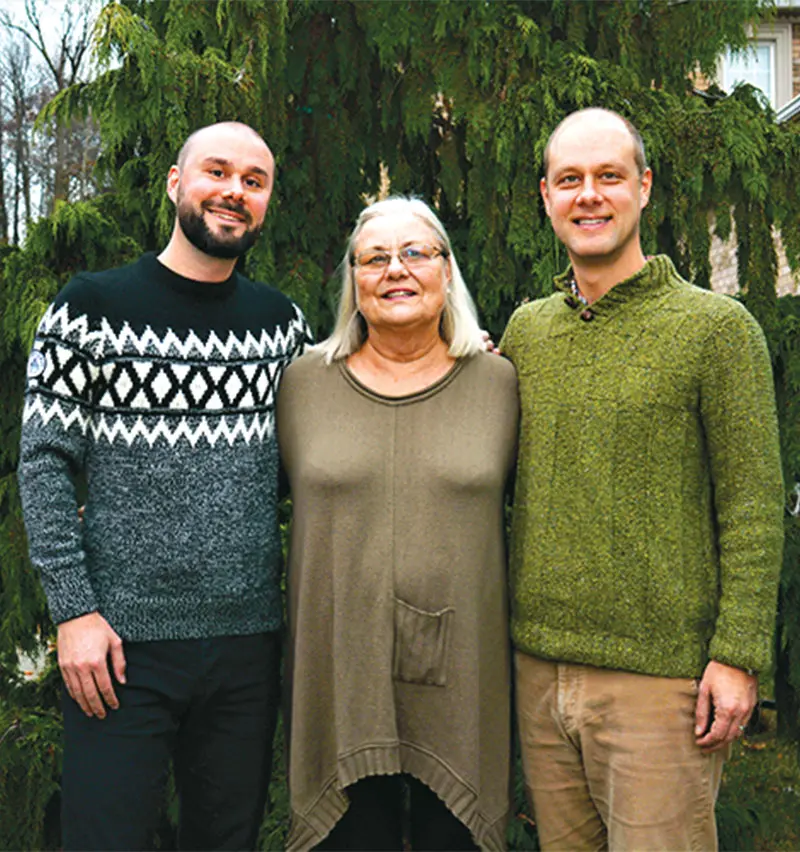
Challenge: To write her late mother’s memoir as a gift for her children and grandchildren
Status: On target
“The manuscript is completed, with the appendices. And all the early pho-tos from my mother’s early life, and from my grandparents’, have been scanned. I still have to scan some later photos and put those into the book. Then I’ll transfer it all to InDesign and create the book, ready to be printed.
“I worked on the manuscript almost every day — well, not weekends! Even while I was editing it, I remembered other small things that I wanted to include. I probably will remember other things after the book is printed that should have been included — but, oh well.
“If I hadn’t been disciplined, I would have been like a lot of people: feeling sorry for myself during COVID because I would have had all that time on my hands to think about all the things I couldn’t do or was missing out on or whatever, right? But I was busy. And that was a really good thing.
“I was disciplined because I knew I had a deadline. My children and my niece, my sister’s daughter, and my cousin and family still in Europe are all waiting for this!
“It was difficult, and often frustrating, trying to get documents from Germany. Everybody was working from home and couldn’t access their archives. I got the last missing date two or three days ago. It took some digging and searching, going from this municipality to another municipality, and then to be told the date I was looking for was too old and has been archived. Everything takes time because people have their jobs to do, and that doesn’t include looking for one date for somebody writing from Canada.
“I’ve started on the family tree — just the people who are in the book, because my one son said to me, ‘Mom, we don’t know who all these people are. Why don’t you make a family tree at the beginning for everyone in the book?’ I thought that was clever, so now that I have the dates, I’ve started the family tree.
“To make the story more readable, more interesting, I used my imagination to create some direct speech — my mom and dad talking about this or that and the other. And earlier conversations, like during my mother’s childhood, starting with her birth and her father being disappointed because he was expecting a son.
“I think Mom would love it simply because we had asked her so many times to record her memories and to speak them on tape. And she wouldn’t. So for her to know that those documents and the old photos have been preserved for posterity — she would absolutely love it. And she would love that her grandsons and her great-grand-children who didn’t know her would learn about her and would learn about their roots and would be happy about the really good life she had.
“I’m hoping to have the book printed this spring. Because of COVID, it wasn’t done for Christmas. But there wasn’t anything I could do about that.”
Success is not final; failure is not fatal; it is the courage to continue that counts. – Winston Churchill
6. Andrée Boudreau
District 4 Sudbury, Manitoulin
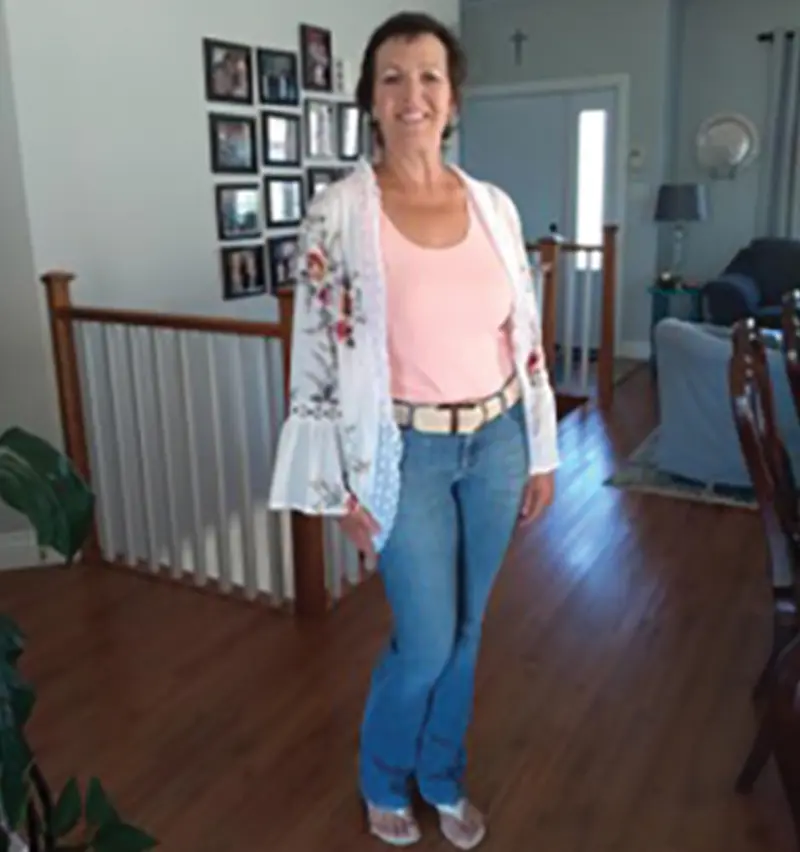
Challenge: To lose 25 pounds and get back into shape
Status: Accomplished
“It’s been a slower process than I thought it was going to be. Because of the chemo and radiation, I have brain fog — some people call it chemo brain — and I’m working my way through it. Exercise has made me feel more like me; I’m less tired.
“I have stuck to my plan, with some sort of activity every day — walking or kayaking or swimming laps in the lake.
“Kayaking is just so freeing. You’re all alone on the lake, and there’s nobody to bother you. And it’s gorgeous!
“My activities will change with the seasons, of course. I’ll transition to winter activities such as cross-country skiing, which I started a couple of years ago. I have snowshoes, so I’ll snowshoe this winter, too.
“I’m not a gym person. But if the weather is terrible, we have an elliptical at home, so I’ll do that.
“I lost the weight, and I am sticking to the no flour/no sugar diet I have been on. I am not going to gain that weight back!
“It’s a simple, healthy way to eat. Our meals are just, you know, a little bit of meat and veggies. I may have a couple of glasses of wine on a Friday night — sugar, right? — but the next day I’m back on track.
“I feel like this diet combined with the exercise component helped me reach my goal. But it helped me feel better, too. My outlook on life is really positive. My advice? Have a goal, make a plan, and then just do it.”
